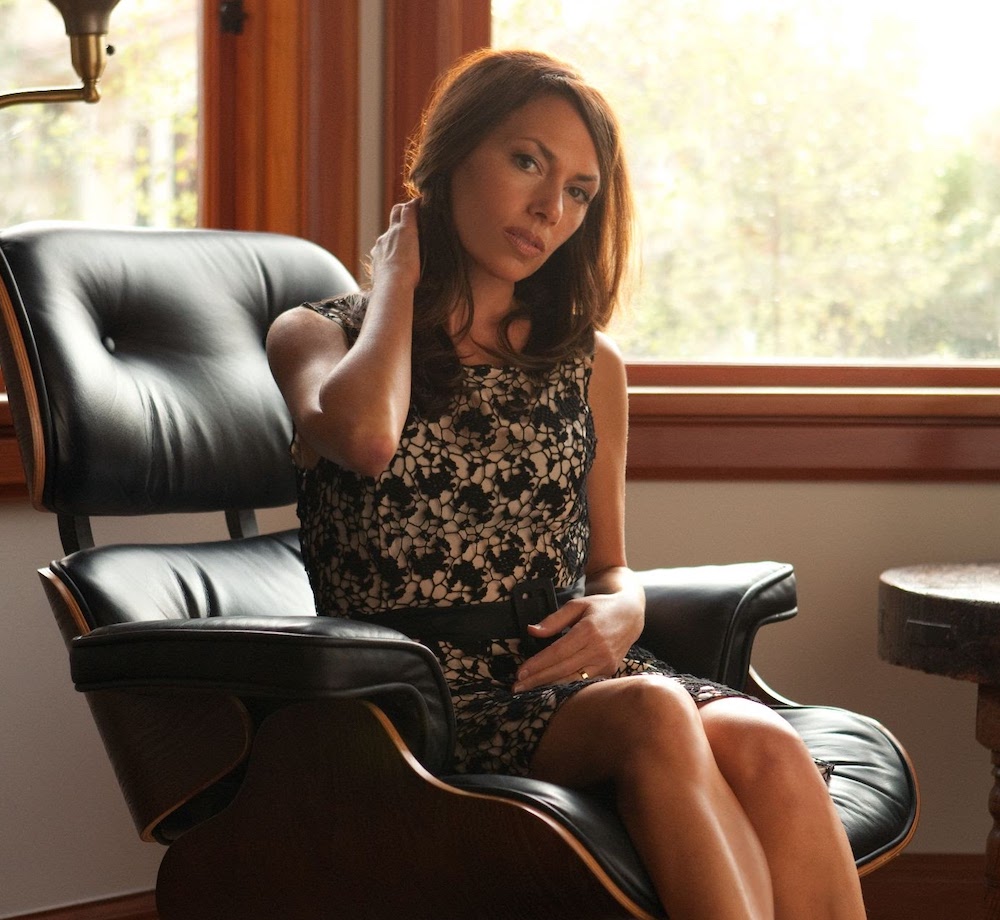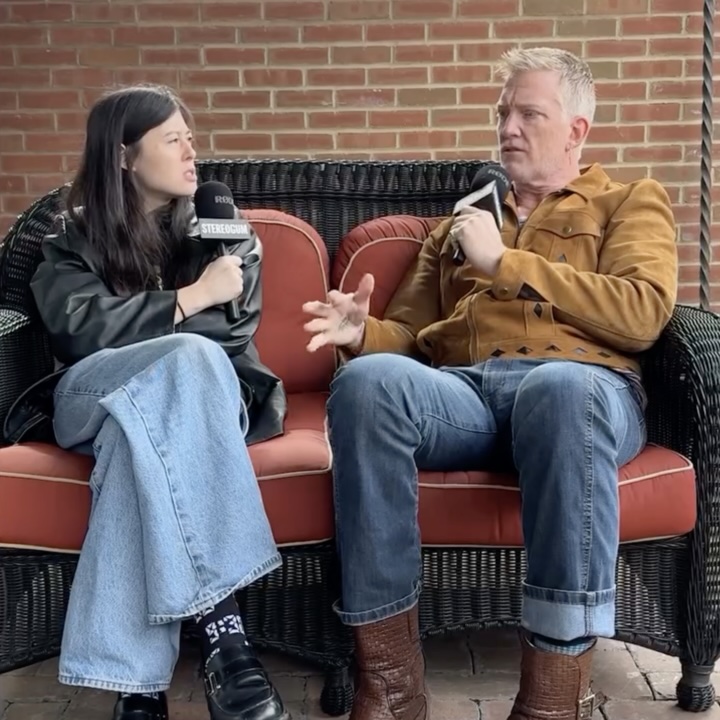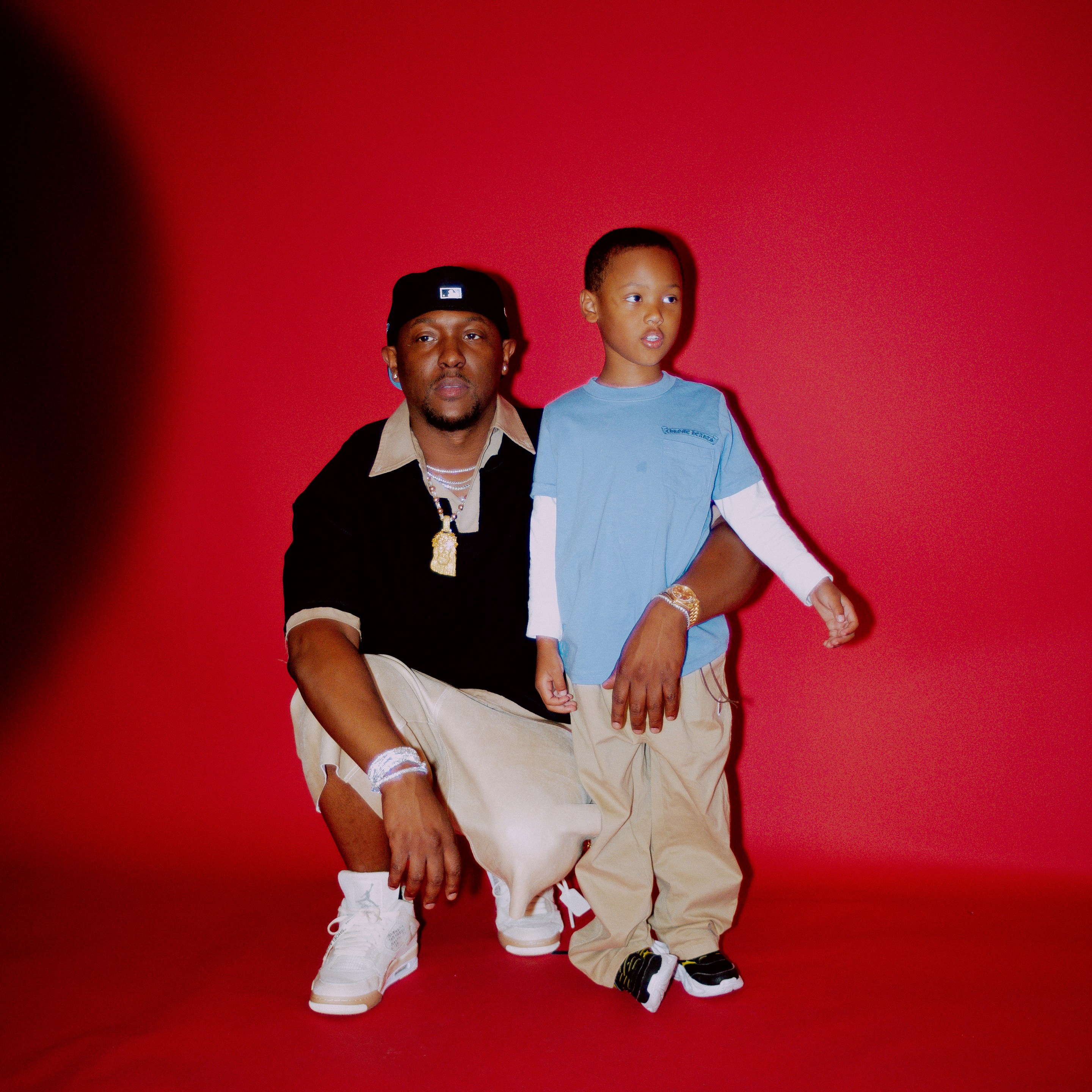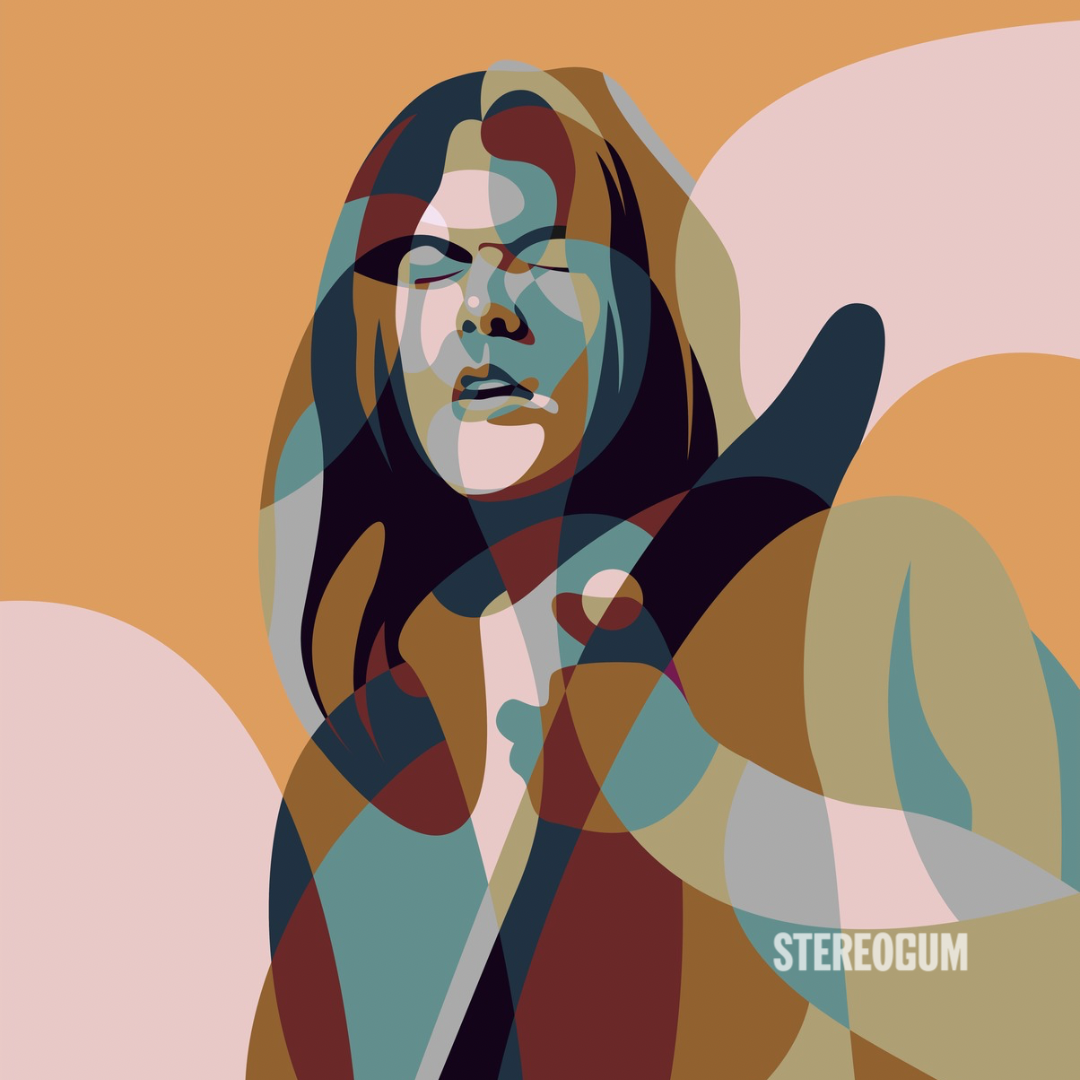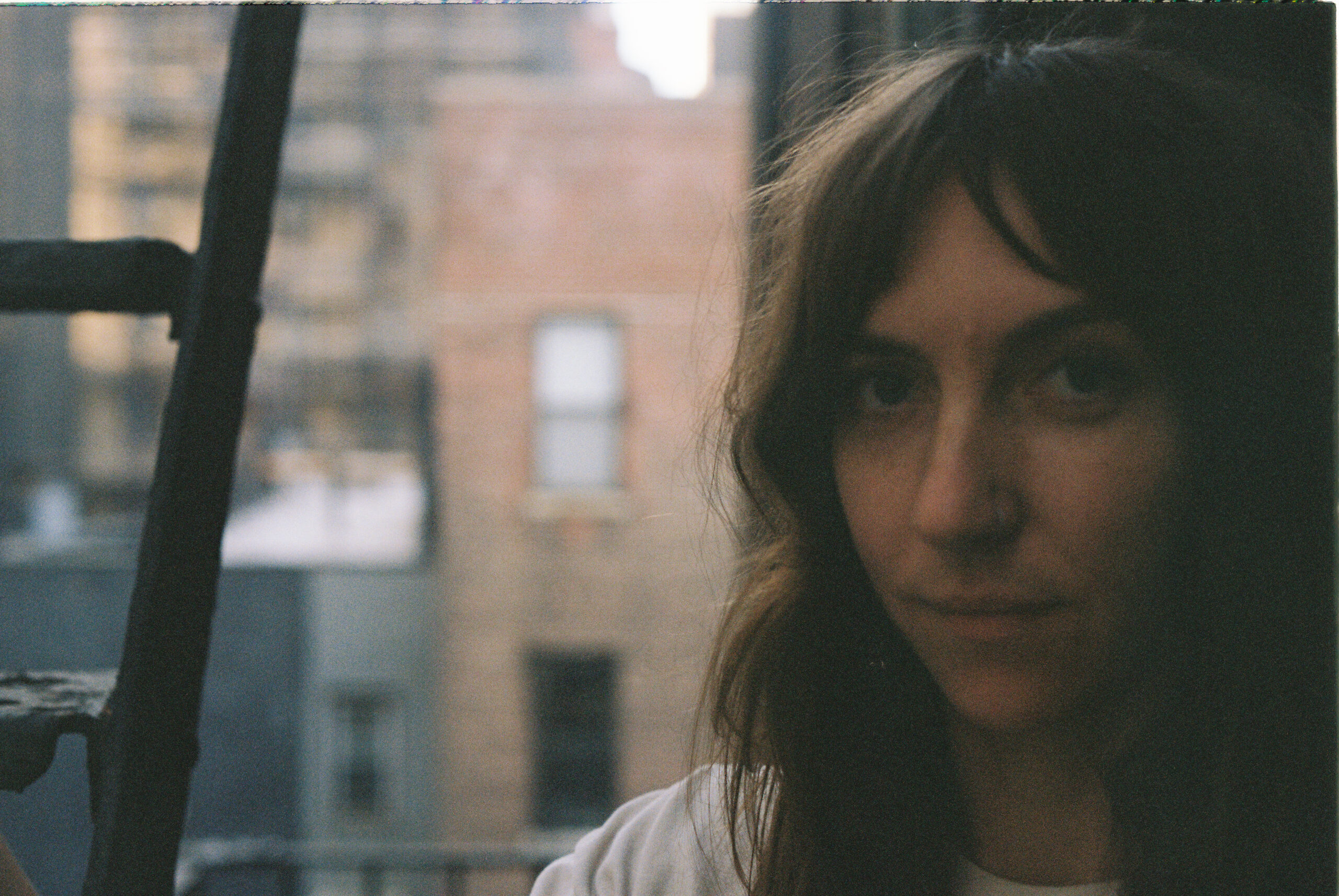We've Got A File On You features interviews in which artists share the stories behind the extracurricular activities that dot their careers: acting gigs, guest appearances, random internet ephemera, etc.
By entertainment industry standards, Susanna Hoffs' career is epic. Of course, you could say she was Succession-style born into her line of work (minus the familial backstabbing). The daughter of writer/director/producer Tamar Simon Hoffs, the Bangles singer and co-founder grew up extremely plugged into the arts, dancing ballet and visiting the theater with her parents and siblings. By the time she was in college, Hoffs had already started acting in indie features, but it was Los Angeles’ underground punk scene — plus catching shows from Patti Smith and the Sex Pistols — that really inspired her.
Soon, Hoffs had her own punk project, at first called the Colours, then the Bangs, and finally the Bangles, which she co-founded with Debbi Peterson on drums and Vicki Peterson on guitar. Rounding out the lineup was Michael "Micki" Steele (replacing original bassist Annette Zilinskas), who'd already achieved some name recognition with the since-disbanded proto-punkers the Runaways. With an appealing combination of punk DIY aesthetics, '60s guitar pop, and a touch of ‘80s new wave, the Bangles enjoyed a major wave of critical and commercial success until they disbanded in 1989, shortly after releasing the chart-topping ballad "Eternal Flame."
The group would eventually reunite in the late '90s, but in the interim, Hoffs kept extraordinarily busy, releasing solo material -- including three covers albums with Matthew Sweet -- writing music for film (Now And Then, memorably), and popping up in all three Austin Powers films as Gillian Shagwell, the guitarist in Powers' (Mike Myers) band Ming Tea.
These days, Hoffs is getting ready to release another covers record, this time minus Sweet. It's called Bright Lights and features updated renditions of songs by Nick Drake, Badfinger (that cover features Aimee Mann), the Monkees, Prince (naturally), the Velvet Underground, and more. She's also back in the studio, with superproducer Peter Asher, and she's working on her debut novel. "I always love singing and playing with the girls," Hoffs says over the phone. "But I had to make room to work on other things, and I'm sure there will be more Bangles collaborations down the line."
Ahead of Bright Lights, Hoffs called me up from her Los Angeles home, which she shares with husband, director Jay Roach, to chat about doing another covers album, recording with Mann ("her voice gives me the best kind of shivers"), and how the Bangles kept their DIY ethos all through the ‘80s.
Bright Lights & Covering Badfinger With Aimee Mann (2021)
This is hardly your first time venturing into covers territory, though in previous years you’ve done cover albums with Matthew Sweet. When did you begin thinking about doing a (mostly) solo covers album?
SUSANNA HOFFS: I fell in love with music as a child. As a baby, my mother was always playing the radio. I was growing up in the '60s, so I was inundated with amazing music and it had a profound effect on me. And as I began to play music myself, my uncle put a guitar in my hands when I was like six or seven years old, or maybe eight. There's a picture of me from 1967 playing, so it would have been before that, and I turned eight in 1967. I learned playing other people's songs. But I was also, even at that age, beginning to kind of tinker around with writing my own, but they were all very derivative of old folk songs, like the Kingston Trio's stuff. My mother also played Dionne Warwick records all the time, and it was all the Burt Bacharach, Hal David songs. And of course Beatles records.
My mother had a friend who worked at Capitol Records, so we got all the Beatles records straight from Capitol right when they came out. And my brothers and I -- I have an older brother named John and a younger brother named Jesse -- we would sing along to those records and we were completely smitten with the Beatles. So all of these various musical influences from my childhood kind of have informed my journey as a musician. For me, singing other people's songs couldn't be more natural and more fun.
I ended up writing songs when I started to really look at being a musician professionally after college, with David Roback, who was my first musical partner. He went on to do the Rain Parade and Mazzy Star. But for me, doing a cover, I don't differentiate between a song I wrote particularly and a song I like to sing. I'm actually recording with the great Peter Asher right now, and when it came to song choice, I never hesitate to say "Ooh, I've always wanted to sing this song, I've always wanted to sing that song." So for me, it's really intuitive and natural to just sing other people's songs.
How did you end up connecting with Aimee Mann to cover Badfinger's "Name Of The Game"?
HOFFS: I've known Aimee since the '80s when she was 'Til Tuesday and I was a Bangle. And our paths have crossed many times. I have actually performed and sung with Aimee quite a bit in recent years. We both love this venue called Largo in LA… And I've actually toured with Aimee. She does a holiday show often during the holiday season in December, and I've performed with her numerous times, both at Largo and going on tour with her holiday show. And I've always revered her as a songwriter and I love her voice. Her voice is so instantly recognizable and so beautiful, and I'd longed to record with her, having done a lot of things live with her.
And so when I set about making this record, which I kind of cobbled together a couple of songs here, a couple of songs there, working with Paul Bryan, who actually has produced the last few Aimee Mann records and plays in her band often, it just came up. I'd chosen various songs that I'd always kind of loved but had never actually tried on for size and sung myself. That was one of the interesting things about Bright Lights, there were songs that I loved listening to but they weren't ones like "Different Drum," that was written by Mike Nesmith, or "It Doesn't Matter Anymore," which is a Paul Anka song. There were songs from my childhood that I'd heard and sung on repeat through the course of my life, but interestingly, the songs on Bright Lights were songs that I really loved to listen to but I never sort of found myself singing along to them. So when it came time to record “Name Of The Game,” I turned to Paul and I was like, "God, it would be really cool to get Aimee on this. I have this feeling she would like singing this song and loves this song as much as I do." So Paul reached out to her, and before he said the name of the song, Aimee said, "Name Of The Game." She guessed it.
There are other way more famous Badfinger songs. "The Name Of The Game" was one of those beautiful, semi-obscure Badfinger songs. There was this bizarre, intuitive kind of kismet that Aimee just guessed the song, and she was in, she was like, "Yes." So that all was like a fairy tale come true, to finally record with Aimee. Her voice gives me the best kind of shivers, it's so beautiful.
Starring In Stony Island (1978)
How seriously did you consider acting when you were still a late teenager? You had this moment as a college student where you popped up in a few films, before the Bangles formed.
HOFFS: Well, I did a lot of theater all through school, even middle school and high school. And whether it was musicals or plays, in my high school you could almost take like a major, so theater was kind of my major in high school. And I grew up in a family where going to the movies was a major part of our lives. My other great love is cinema. But I really love all the arts. My mother was a painter starting out, [and] she became a screenwriter. It was a really nice childhood, because my brothers and my parents and I all shared this passion for the arts, and my parents always took us to museums, and movies, and theater, and I was a ballet dancer when I was a child, always got to see the ballet, and we traveled quite a bit, so it was great.
As far as acting goes, I think that when I was attending UC Berkeley, I actually started out in the theater department, but then I switched to dance. They had a very excellent dance department. And then I changed my major and became an art major, and I just actually got my degree in art, where I was painting and making sculpture and stuff.
So it was always a swirl for me. Theater, music, dance, art, painting, sculpture, conceptual art, all of it. In college I went to see the Patti Smith Group at Winterland, I think it was in 1978. I saw the Sex Pistols' last show at Winterland Ballroom in San Francisco, because I was across the bay at UC Berkeley. Patti Smith was a huge influence because I'd read her poetry books, and then to see her perform ... I think for some people it's hard to define which thing is going to be the thing that you end up focusing on, so I kind of danced around all the different aspects of the arts. When it came to acting, it was something that I didn't take as seriously as music. Music seemed to rise to the top for me, and singing, I guess you could say I kind of ultimately found my voice in music.
Starring In The Allnighter (1987)
A little bit later into your Bangles career, I noticed that you were in a very ‘80s movie, directed by your mom: The Allnighter.
HOFFS: Oh, so '80s. Quintessentially '80s.
With a young Joan Cusack. What stands out when you look back at an experience like that?
HOFFS: Well, they re-released the DVD with some commentary that my mom and I did I think in the late ‘90s. The people at the company that has the DVD available, they're called Kino Lorber, I think. They do a lot of reissues of classic or cool, interesting, under-the-radar old movies. It's cool that they're resurrecting old stuff from the '80s and all eras of cinema. So I recently was looking at it, and Pam Grier is in it, and Michael Ontkean. It had a really interesting cast. It's kind of wall-to-wall music, it's so ‘80s. It was so nice seeing Joan Cusack in the footage and reflecting back on making it, it was incredibly low budget. It was filmed so fast. It was like between Bangles tours and just on a whim.
When I had known that my mom was involved with it, maybe the script, or being assigned the job of directing it — it was a very last-minute thing, like, “Will you be in it?” I didn't even think hard enough about saying yes or no, I just sort of went on impulse, "Yeah, I'll do it." And it was a chance to do something with my mom, who I've always been extremely close with.
The day that they wrapped my part in the movie, I was flying to do some show with the Bangles. It was just sort of shoved in between Bangles tours. But it was a really fun experience. And so quintessentially ‘80s.
Playing Public Access TV With The Bangles (1983)
Focusing a little bit more on your early work with the Bangles, there’s a very early clip of the group performing on what looks like a local music channel, MV3. Given the band’s local Los Angeles roots, what did it mean to you to get that kind of exposure?
HOFFS: I think it was the beginning of feeling like there's interest in the Bangles. We had just changed our name to the Bangles, if it was ’83, we would have just been signed to Columbia Records. They were really the only record company who were interested in us, and they were Columbia, the home of Simon & Garfunkel and Bob Dylan. So I always say to people when they worry about like, "Oh good, will anybody ever sign me or discover me?" and I say, "It only takes one person, generally, at one label or place." You never know.
We had been growing a little audience locally in LA, and we were part of this paisley underground scene of young bands in LA who were really obsessed with ‘60s music. And we were very much covering cool ‘60s songs, and writing songs in the style of our favorite ‘60s music. And in the case of the Bangles, Beatles harmonies and Mamas and Papas harmonies, and we were crafting our sound.
So to be picked up on MV3 was really a big break. It was the beginning of a lot of stuff like that starting to happen, like a little buzz growing about the band.
Playing "Hero Take A Fall" / "Going Down To Liverpool" On Letterman (1984)
And just in the next year, you had your national late-night debut.
HOFFS: We were so nervous, and yet so focused. We were on tour with Cyndi Lauper at the time, I believe. And I love that Letterman performance. He let us do two songs, which is phenomenal. He was always so good to the Bangles, and I was on his show as a solo artist as well, I'm very grateful that he had us on because those things make a huge difference.
It's just like in England when you get picked to be on Top Of The Pops. It was like people would fly across the globe to get there, to be there at the beck and call of Top Of The Pops because it was such a big thing, it was pre-internet. So having a television appearance in which lots of people would be exposed to the sound of the band was huge.
I love the Letterman appearance. I love the whole vibe of it. We were very much like a garage band, we didn't have anybody helping us. There were no high fashion designers offering up cool costumes. Everything we wore was like either from thrift stores or cobbled together from stuff in our closets. We were scrappy.
Playing The MTV VMAs (1987)
So by the time the Bangles were playing the VMAs, were you fielding any offers to have designers dress you, or any other, shall we say, perks of being in a popular band?
HOFFS: In a word, no. No, no one ever helped us with that, it was hilarious. We never, for whatever reason, had wraps of beautiful clothes sent over to whatever apartments we were living in at the time. We remained a garage band I would say during the entire era of the ‘80s. I guess there was a point, maybe towards the late '80s, where we started to every once in a while have somebody do our hair or put on makeup.
I look back at the period when we were just doing everything ourselves, going to Betsy Johnson whenever we were in New York and grabbing a bunch of stuff to wear for the tour, but we were never polished, we were never put together, we were always kind of a jumble of different looks and hairdos. I don't know, we were just really DIY.
Did you ever feel like the Bangles could have been better prioritized by the label?
HOFFS: I think there was a moment in time when "Walk Like An Egyptian" went to number one unexpectedly after they just sort of threw the single out. It was the third single on Different Light. I remember hearing those words from our managers at the time, Miles Copeland and Mike Gormley, and I remember I have a telegram ... In the days of telegrams. Like this seems like something from ancient days. “Your song is number one.” But I remember hearing those words: “You are up at the top of the list of priorities.” We'd finally arrived. And it was such a whirlwind.
At the time, we were always in a hotel room or going to the airport. Everything was kind of a blur, but I do remember having a moment where I stopped and I thought, "Oh wow, things are all kind of coming together in this really interesting way." But you almost don't have time to process it, if that makes any sense.
It all is somewhat of a blur, but little moments in time seem to just surface and I can still access them. But yeah, there was a moment where I remember someone saying "The Bangles have just been made priority at Columbia Records."
Writing The Theme To Now And Then (1995)
Did it feel like a natural merging of your interests in film and music when you were asked to write the theme song to Now And Then?
HOFFS: Wow, you're just reminding me of something and now I want to go track down the song. I wonder if it's on streaming. So in the ‘90s, I got married in ’91. And my husband's a filmmaker [Jay Roach], and he had gone to USC film school with Susanne and Jennifer Todd. And they produced the movie, and they were always and continue to be really wonderful supporters of my music. And they asked me, would I create something for the movie? And that's how it came about.
So now I'm going to go revisit that because it's been a while since I saw the movie, or even remembered to look back on the song as well. I remember I had so much fun doing that, though. So I'm glad you pointed that out.
Performing In Austin Powers' Band (1997, 1999, 2002)
https://youtube.com/watch?v=YFBMPgZ75K0
You mentioned how influential ‘60s pop was to you growing up, and how that molded your sound with the Bangles. Come the ‘90s, how was it to actually cosplay as a retro-mod guitarist in all three of the Austin Powers films?
HOFFS: Oh, it was so much fun, and it was a chance to work with so many friends, like Matthew Sweet and Mike Myers. The Austin Powers universe was really big in our household because my husband directed the three movies and I had that opportunity to make music with Mike and Matthew and the other wonderful players in the band.
And originally, I brought Mike, who we were friends with socially, to see Matthew Sweet play at the Caves one night prior to Austin Powers. Matthew had invited me to sing with him way back then, in the ‘90s, and we all want out to dinner afterwards. So it was like the beginning of a group of friends, and Mike is a really talented musician. It's not something everyone knows about Mike because he's so talented in all these other ways, but he also happens to be a great drummer, a guitar player, [he] can play bass.
We used to jam a lot, and we just started to do it for fun. And as he was kind of crafting the whole Austin zeitgeist and universe, we were sort of messing around in his garage playing music, and we actually did a show at the Viper Room as Ming Tea, almost as a way for him to kind of workshop the Austin character. It was really interesting. So the music and the idea that Austin would be so cool, such a sweet, cool spy that he also had a band, became sort of a cool aspect of the character in the Austin Powers universe.
It was just such a great treat and honor to be included in the Austin world. I love all of the stuff that we did. And now I have friends who are having kids who are writing me emails like "Oh, we were just watching Austin Powers, we did a movie night, we watched them all..." It lives on as a very cool franchise.
Performing With The Bangles On Gilmore Girls (2001)
My introduction to the Bangles was actually through Gilmore Girls, when the band plays a show that Lorelai takes Rory and her school friends to. How did you guys end up appearing on the show, and were you all actually playing live? Because it looked like the episode took place at a real live Bangles concert.
HOFFS: So many friends and colleagues in the music business were given a chance to be on that show. [Gilmore Girls creator] Amy [Sherman-Palladino] is a huge lover of music and she figured out a way to combine her idea for the show with having some musical appearances, it was ingenious. And so we were the lucky recipient of the fact that she was a fan of the band, and so she just literally contacted us early on in the show's... I think maybe it was the first season.
It was the first season, yeah.
HOFFS: Yeah. So we were given the plot of the episode, and I said a resounding “yes” because I'd been hearing about the show already from some friends of mine who were just, based on the pilot episode I got calls like "You got to check out this show." And so it was like a couple weeks later that we were contacted about being in the show. So it was really fun. They filmed it at maybe the Wiltern or something, a local theater in LA, and it was live performance. No retakes, like just do it.
And they captured it, and then... yeah, I can't tell you how many people have contacted me to say both they love that show and that they loved that episode. It really makes me happy, I'm so glad that happened.
Performing On Dancing With The Stars With The Bangles (2011)
As time goes on and programs like Dancing With The Stars bring the Bangles out as an ‘80s nostalgia act, how does that resonate with you, as someone who is so busy and actively involved in so many creative projects?
HOFFS: You know what, I'm a Bangle, I was a Bangle, I am a Bangle, I'll always be a Bangle. And I love singing those songs, I'll never tire of singing them. Prince gave me the gift of “Manic Monday” and I love singing that song, I really do. For me, I'm just always wanting to grow, and change, and try new things. So there was definitely a period where the Bangles were more active and kind of a reunion phase where we were performing and touring quite a bit.
And it was a little under the radar, I think most people weren't really aware of it. But I've kind of slowed down on doing that because I've been so involved in working with Matthew Sweet for example, and the three covers albums. Just to allow myself a chance to do other things like making the Bright Lights record and doing those little runs with Aimee Mann over the years.
And I've written a novel, and a lot of things have been happening that you'll know about soon probably more publicly, but I'm just one of those people who wakes up in the morning and I have a lot to do to create all these different pieces of content.
I enjoyed doing the Bangles tour. I always love singing and playing with the girls. But I had to make room to work on other things, and I'm sure there will be more Bangles collaborations down the line.
Paying Tribute To Prince With Chris Martin (2020)
Speaking of Prince and "Manic Monday," what did it mean to you to honor Prince last year at the Grammys Salute alongside Chris Martin?
HOFFS: It was a very defining moment to work with Chris Martin. We came up with a version [of "Manic Monday"] that fit the show, and the moment of the show where Misty Copeland talks about working with Prince just before he died -- it was so beautiful the way that he always wrote songs for female artists.
All this kind of stuff that was part of that night and that event, the Salute To Prince ... It was just phenomenal. I learned a lot just having that opportunity to do "Manic Monday" with Chris Martin. It fit with the way that I'm kind of approaching stuff that I've done in the Bangles. I love how we do it when we're doing the band version of it, but it feels so fresh and exciting and illuminating to go and look at the song from a different angle and think, well, how about just two voices and a piano?
It was like the song took on this whole new life. And you know what, I can say this thing about Chris, is that when we sat down and we both gravitated to this idea. I had this idea of a really stripped-down version. But then when we sat together on the same bench of a piano and played it, it was like he never played it the exact same way. Every single time we rehearsed it, it was slightly different. So you were so in the moment because you didn't quite know what it would feel like. Sometimes a little faster, sometimes a little slower, sometimes he picked different voicings on the piano to play the chords.
That's sort of how I'm approaching everything these days. I love the feeling of unexpected and new, and really being in the actual moment where you don't quite know what's going to happen. It's fun. It's definitely fresh, it keeps things fresh and exciting.
//
Bright Lights is out 11/12 via Baroque Folk Records. Pre-order it here.
